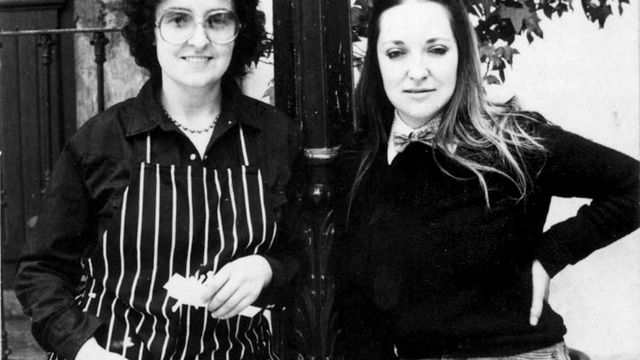
Polvo de Gallina Negra
Polvo de Gallina Negra (PdGN; Black hen powder) was a performance group founded in 1983 in Mexico City by the artists Mónica Mayer (b. 1954) and Maris Bustamante (b. 1949) and—initially—the photographer Herminia Dosal. It was Mexico's first self-consciously proclaimed feminist art collective. PdGN's innovative performance practice crystallized as a result of the unique experiences of the two principal founders. Mayer was involved in feminist groups in Mexico City in the mid-1970s and studied at the Feminist Studio Workshop in Los Angeles between 1978 and 1980. Bustamante developed ephemeral and transgressive actions and media interventions as an individual artist and with the collective No-Grupo (active 1977–83), which built on the premises of arte no-objetual (nonobjectual art) as theorized by the Peruvian Mexican critic Juan Acha.
PdGN's aims were threefold: "(1) to analyze women's images in art and in the media, (2) to study and to promote the participation of women in art, and (3) to create images based on our experience as women in a patriarchal system, with a feminist perspective and with the goal of transforming the visual world in order to alter reality."# With their characteristic sense of humor, the group chose to name themselves after a popular remedy against the evil eye.
Building on tactics developed by social movements, PdGN sought to reach mass audiences through the deployment of mail art, performances in urban spaces and public institutions, and participation in communications media, always with sardonic humor. They inserted themselves into street demonstrations protesting violence against women (1983) and against the tightening of abortion laws in Mexico (1991), for example. In 1984, wearing distinctive boots and aprons covering their visibly advanced pregnancies, Bustamante and Mayer gave more than thirty performative lectures on women artists. From 1984 to 1990—in museums, at universities, and on television— they debated and questioned stereotypes surrounding motherhood. The group eventually disbanded in 1993, and Bustamante and Mayer went on to pursue other projects.
—Dorota Bizcel
Selected Performances and Actions
1983 Receta del grupo Polvo de Gallina Negra para hacerle el mal de ojo a los violadores, o el respeto al derecho del cuerpo ajeno es la paz, Benito Juárez Monument, Mexico City
1984 Las mujeres artistas mexicanas o se solicita esposa, various venues
1987 Concurso "Carta a mi madre," Museo de Arte Carrillo Gil, Mexico City
1987 ¡Madres! Madre por un día, television program Nuestro mundo
1990 Tres madres para un desmadre, various venues
Selected Bibliography
Barbosa Sánchez, Araceli. "Polvo de Gallina Negra." In Arte feminista en los ochenta en México: Una perspectiva de género, 113–38. México City: Casa Juan Pablos; Cuernavaca, Mexico: Universidad Autónoma del Estado de Morelos, 2008.
Blanco Cano, Rosana. "Maternidad, arte y ciudadanía: Proyecto ¡Madres! del grupo Polvo de Gallina Negra." Karpa 4.1–4.2 (2011): unpaged. https://www.academia.edu/7758028/Blanco_Cano_Rosana._Maternidad_arte_y_ciudadan%C3%ADa_Proyecto_Madres_del_grupo_Polvo_de_Gallina_Negra_Maris_Bustamante_y_M%C3%B3nica_Mayer_.
Carroll, Amy Sara. "A Critical Regionalism: Mexico's Performative Range-of-Motion in Madre por un día & the Rodríguez/Felipe Wedding." e-misférica 2, no. 2 (November 2005). http://hemi.nyu.edu/journal/2_2/carroll.html.
Mayer, Mónica. "¡Madres!" In The M Word: Real Mothers in Contemporary Art, edited by Myrel Chernick and Jennie Klein, 162–70. Bradford, ON, Canada: Demeter, 2011.
Rosa, María Laura. "Pródigas complicidades: El grupo de arte feminista Polvo de Gallina Negra y sus vínculos con el Museo de Arte Carrillo Gil." In Exposiciones de arte argentino y latinoamericano: El rol de los museos y los espacios culturales en la interpretación y la difusión del arte, edited by María José Herrera, 245–59. Buenos Aires: Arte x Arte, 2013.


